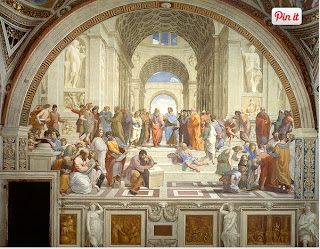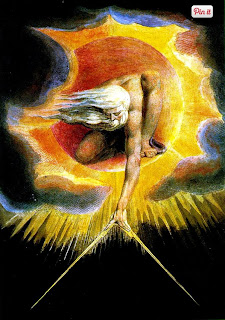I chose the painting of the bull because someone obviously used lines to draw the bull.
I chose the photo of the ceiling because it shows lines going up the building.
Shapes are formed wherever the ends of a continuous line meet. Geometric shapes such as circles, triangles or squares have perfect, uniform measurements and don't often appear in nature. Organic shapes are associated with things from the natural world, like plants and animals.

I chose the photo of the man and women because if you look close enough you can see the shapes used.
I chose the photo of the gate because you can see the squares in between the fences design.
Color wheels show the primary colors, secondary colors, and the tertiary (intermediate) colors. They also show the relationships between complementary colors across from each other, such as blue and orange; and analogous (similar or related) colors next to each other such as yellow, green, and blue. Black and white may be thought of as colors but, in fact, they are not. White light is the presence of all color; black is the absence of reflected light and therefore the absence of color.
I chose the photo with the man touching the sky because it shows plenty of colors in the picture.
I chose the photo with the lights and colors because again it shows plenty of different colors throughout the picture.
Value, or tone, refers to dark and light; the value scale refers to black and white with all gradations of gray in between. Value contrasts help us to see and understand a two-dimensional work of art.
I chose the photo with the man holding a silver globe because it shows the contrast between the black and gray in the photo.
I chose the photo with the animal skull because in shows gray and black, also it shows a nice dark side in the photo.
Form describes objects that are three-dimensional, having length, width, and height.
I chose the photo with the Police officer and the boy because it looks like a photo, which appears to look 3-D.
I chose the photo of the building because you can see the 3-D features of the building.
Texture can be rough, bumpy, slick, scratchy, smooth, silky, soft, prickly--the list is endless. Texture refers to the surface quality, both simulated and actual, of artwork.
I chose the painting on the left because it gives off the soft feel to the viewer.
I chose the photo on the right because you can see the roughness on the rocks through the photo.
Space refers to distances or areas around, between, or within components of a piece. Space can be positive (white or light) or negative (black or dark), open or closed,shallow or deep, and two-dimensional or three-dimensional.
I chose the photo on the left because you can see the space between the sticks.
I chose the photo on the right because you can see the windmills and how far away they are from each other.

I chose the lower photo because the painting looks identical on both sides.
Contrast is created by using elements that conflict with one another. Often, contrast is created using complementary colors or extremely light and dark values. Contrast creates interest in a piece and often draws the eye to certain areas. It is used to make a painting look interesting.

I chose the photo on the left because it shows the dark and light in the picture.
I chose the picture on the right because you can see the zebras black and white stripes.
Emphasis in the focal area of an artwork gives it importance. An artist may stress some elements of the design over others. The eye of the viewer will focus on the area of emphasis or center of interest first, then take in the rest of the composition.
I chose the photo on the top because the you can focus on the different things in the photo.
I chose the photo on the bottom because it's very eye popping and makes you focus on the tree.
Movement in an artwork means the artist is taking viewers on a trip through the work by means of lines, edges, shapes, and colors often leading to the focal area. Movement is a visual flow through the composition. It can be the suggestion of motion in a design as you move from object to object by way of placement and position. Directional movement can be created with a value pattern. It is with the placement of dark and light areas that you can move your attention through the format
I chose the upper photo because it shows the people in the painting moves and dancing.
I chose the lower photo because it shows the water flowing down into the pool.
Patterns are made in art when the same shapes or elements are repeated again and again. Pattern uses the elements of art in planned or random repetitions to enhance surfaces of paintings or sculptures.
I chose the upper photo because you can see the pattern between the people and how it never ends.
I chose the lower photo because you can see the repetition in the pictures with the arrows.
Rhythm is the repetition of shapes, lines, and forms. Rhythm is a movement in which some elements recurs regularly. Like a dance, it will have a flow of objects that will seem to be like the beat of music.
I chose the photo on the top because you can the rhythm in the picture with the soup cans.
I chose the photo on the bottom because you can see the repetition in the photo with the flags.
Unity means that all elements in an artwork are in harmony. Unity brings together a composition with similar units. For example, if your composition was using wavy lines and organic shapes you would stay with those types of lines and not put in even one geometric shape.
I chose the top picture because you can see the same shapes throughout the picture between the tree and explosion.
I chose the bottom picture because you can see repetition in the photo with the waves flowing through.
I chose the bottom picture because you can see repetition in the photo with the waves flowing through.

























No comments:
Post a Comment